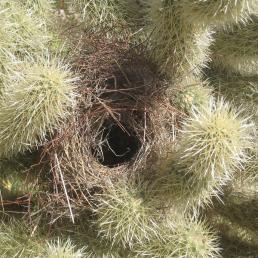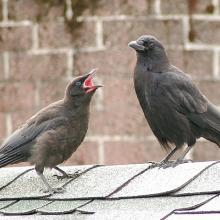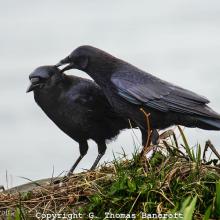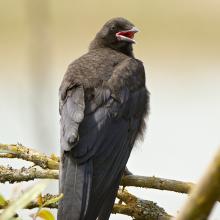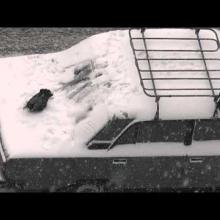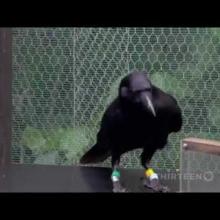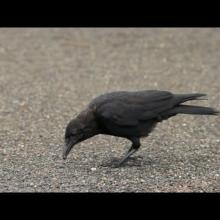

Join BirdNote tomorrow, November 30th!
Illustrator David Sibley and actor H. Jon Benjamin will face off in the bird illustration battle of the century during BirdNote's Year-end Celebration and Auction!
Crows are found on every continent except South America and Antarctica. And while there are a lot of similarities, there are a lot of differences, too. Imagine a powder-gray crow with a pink beak. There’s one thing they have in common, though: they’re all smart.
BirdNote®
A Wide World of Crows
Written by Bob Sundstrom
This is BirdNote.
[American Crow call, https://search.macaulaylibrary.org/catalog?taxonCode=amecro&mediaType=a…, 0.01-.03]
Crows can seem... a bit mundane. They’re all about the same size, all black. Right? Wrong. There’s a wide world of crows out there, with more than three dozen species.
New Guinea is home to the Grey Crow, feathered in powder gray with a hefty pink beak.
[Grey Crow, https://search.macaulaylibrary.org/catalog?taxonCode=grycro1&mediaType=…, 0.27-.29 ML79809]
The Hooded Crow of Europe and the Middle East is sort of a two-tone crow. It has a gray body, nicely offset with black head, wings, and tail. The Pied Crow of Africa is black with a bold white collar and breast.
The island of Seram, in Indonesia, is home to the Violet Crow. It has an iridescent blue-black body and black hood — or head — with a very small beak.
And then there’s the aptly named Large-billed Crow, of East Asia, with a massive, humped honker of a beak.
[Large-billed Crow sound ML108065]
You’ll find crows in forests, dry scrubland and many ecosystems in between, from northern farmlands to the southern tropics.
The first crows evolved on an ancient fragment of land that would later become Australia. From there, they spread to Asia and on to other continents. Today more than a third of all the world’s crow species are found only on isolated tropical islands. And they all belong to the genus Corvus, along with their larger kin, the ravens.
So, when you say hello to your neighborhood crow, consider how unique that bird is, among all the species of crows out there.
[Large-billed Crow ML108065]
You’ll find photos on our website, BirdNote.org. I’m Ashley Ahearn.
###
Producer: John Kessler
Executive Producer: Sallie Bodie
Editor: Ashley Ahearn
Associate Producer: Ellen Blackstone
Assistant Producer: Mark Bramhill
Bird sounds provided by The Macaulay Library of Natural Sounds at the Cornell Lab of Ornithology, Ithaca, New York. Large-billed Crow ML108065 recordist W Hsu. Grey Crow ML79809 - recordist A Mack.
BirdNote’s theme was composed and played by Nancy Rumbel and John Kessler.
© 2020 BirdNote April 2020 / January 2023 Narrator: Ashley Ahearn
ID# crow-01-2020-04-09 crow-01
